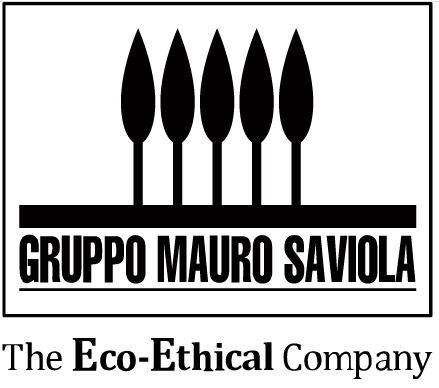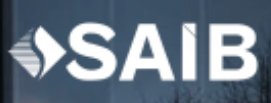Sintesi
The global market for veneer and wood panel production has been experiencing stable growth, with the Asia-Pacific region dominating with a 54.34% market share, led by a surge in demand from the construction and packaging sectors in emerging economies like China, India, and Japan. Europe holds a significant 24.12% of the total market, with Germany at the forefront. The industry is encountering a growing inclination towards environmentally sustainable materials, mirroring consumer and regulatory demands. Specifically, the wood panel market reached 1,000 million cubic meters in 2020 and is projected to see a +6% annual growth from 2021 to 2026. China stands as the largest wood panel producer with 43.6% of the global output, followed by the United States (9%) and Russia (4.3%). Key export players include China (14%) and Canada (8.3%). Italy displays a contrasting trend with a decrease in market size by 18% but shows a resurgence in with a 32.9% increase in industry sales. The Italian market is primarily composed of small and medium-sized enterprises, heavily concentrated in the Northwest region.
The wood construction sector is a major driver behind the growth of veneer sheets and wood panels, leveraging ecological, practical, and economic advantages. Italy has emerged as the fourth-largest country in Europe for wood building implementation. The wood-furniture sector and the packaging industry also contribute to the rising demand, with the former being relatively stable and the latter having grown 46.5%. The price of wood panels is influenced by raw material costs, which has shown volatility, and energy costs. Particleboards lead European wood panel production, accounting for over 50% in the mix. Major players in the Italian market include international groups such as Egger and Swiss Krono Group as well as local manufacturers like Mauro Saviola Group Srl. Industry bodies like FederlegnoArredo play a pivotal role in representing the sector's interests domestically and in Europe.
Trends in the Italian Veneer and Wood Panel Market
The veneer and wood panel market in Italy has seen an intricate evolution over the past years, and several trends have emerged to define its current state. Demand has been fluctuating but is driven strongly by sectors such as construction, furniture, and packaging. In construction, the use of wood has expanded beyond merely roofing to encompass entire structures. This shift towards wood construction, fueled by ecological and economic benefits, has considerably spurred the demand for wood panels. The Italian construction sector, which has leaned towards timber for earthquake-resistant properties and energy efficiency, is one of the largest buyers of wood panels. Italy's rise as the fourth biggest wood-building market in Europe is a testament to this trend, with a turnover of around 1.4 billion euros as of 2020. Similarly, the wood-furniture sector, another significant demand driver, appears to remain stable with slight fluctuations over the years, maintaining annual productions which hovered just below the 5 billion euro mark. Government incentives, such as tax breaks for furniture purchases and renovations, have augmented consumer spending in this domain. Italy's robust standing as a leading furniture manufacturer – fourth globally – further entrenches the country's commitment to the industry. The wood packaging industry is also on an upward trajectory.
Notably, there has been a sharp increase of approximately 45-50 percent in turnovers spanning. This demonstrates the dynamic nature of the sector and its consistent need for wood panels and veneers. Market structure, while drastically affected by the economic recession, has shown signs of a steady recovery. The number of enterprises and employees within the sector, which faced steep declines, began stabilizing and showed promising growth. Regions rich in forests, like Lombardy and Veneto, lead in the number of woodworking enterprises. The production stages of wood panels are extensive, stressing the importance of raw materials such as wood chips and other wood products. The stages include cutting, drying, sorting, gluing, pressing, and finishing – each critical to producing the various wood panels that serve different market needs. Costs are heavily influenced by the price of raw materials and energy demands. Wood prices have seen significant volatility, with a remarkable drop of more than 35 percent within a year, affecting production costs and potentially the market pricing of veneer and wood panels. On the regulatory front, stringent CE marking requirements, fire reaction standards, and emission regulations are part of the compliance.
Profiling the Prominent Market Players in the Veneer and Wood Panel Industry
The veneer and wood panel manufacturing industry boasts several key players that have established themselves as leaders in the market through specialization, innovation, and comprehensive product ranges. These companies have often expanded beyond regional boundaries and have marked their presence globally, catering to varied requirements and advancing industry standards. Let us delve into the profiles of some noteworthy enterprises in this industry:
- Egger: A name synonymous with quality in the chipboard market, Egger has risen to international prominence. Their reputation is built on delivering a wide array of wood-based materials that find applications in furniture design, interior design, and flooring. Known for their commitment to sustainability and innovation, Egger stands tall as a beacon for other market competitors.
- Swiss Krono Group: A titan among wood panel specialists, Swiss Krono Group commands respect for its comprehensive product line-up that includes not only panels but also flooring solutions. Staying true to its Swiss roots, the company maintains a stringent focus on precision and quality in its offerings, serving a global network of customers.
- Mohawk Industries: As a specialist in flooring solutions, Mohawk Industries has achieved a formidable status in the market for its ability to integrate performance with aesthetics. Their product range spans carpets, ceramic tiles, laminate, wood, stone, and vinyl flooring connecting with a demographic ranging from residential to high-traffic commercial environments.
- Wilsonart: With a keen eye for decorative flair, Wilsonart specializes in the production of decorative panels that enrich spaces with both beauty and resilience. Their products often serve as a choice pick for designers and architects aiming to bring a sense of artistry to commercial and residential projects.
- Garnica Plywood: Known for its expertise in plywood, Garnica Plywood has carved a niche in the plywood segment of the market. Its products are tailored to meet the needs of various sectors with an emphasis on innovation, sustainability, and impeccable customer service.
Italian Torchbearers in the Market
- Mauro Saviola Group Srl: A distinguished Italian manufacturer, Mauro Saviola Group has a comprehensive product mix that includes a variety of wood panels that cater to the furniture industry and beyond. Their commitment to quality and sustainability has rendered them a respected name in both the local and international markets.
- Fantoni Spa: An Italian enterprise with a rich legacy, Fantoni Spa deals in a wide assortment of wood panels, office furniture, sound-absorbent panels, and beyond.
per comprendere questo mercato
Dettaglio del contenuto
 Informazioni
Informazioni
- Pagine : 30 pags
- Formato : Versione PDF e digitale
- Ultimo aggiornamento : 05/05/2022
 Riepilogo ed estratti
Riepilogo ed estratti
1 Market Overview
1.1 definition and presentation
Veneer and wood panel production is a sub-segment of the wood products manufacturing market and the woodworking market more generally. Veneer and wood panel manufacturing includes the production of:
- veneer sheets, whether polished, dyed, coated, impregnated, reinforced or in the form of patterns
- plywood, wood veneer and panels
- chipboard
- medium-density fiberboard
- densified wood production
- production of laminated wood.
As for wood panel production, there are several market opportunities:
- construction
- furniture
- packaging
- others, including DIY
The global market is growing at a relatively slow rate. Asia-Pacific accounts for the largest market share, at 54.34 percent in 2019. Emerging economies such as China, India and Japan are estimated to contribute to the growth in demand, especially from the packaging and construction sectors. Europe accounts for more than 24.12 percent of the total market share, which is dominated mainly by Germany.
In Italy, this is recorded under ATECO code 16.21.00, which identifies the manufacture of veneer sheets and wood-based panels. The Italian market has been shrinking for several years. In fact, from 2013 to 2018, it declined by 18 percent.
The Italian market is mostly inhabited by small and medium-sized companies; about 70 percent of companies, in fact, have fewer than 10 employees, while less than 1 percent have more than 250 employees. Most of these companies are located in the Northwest, with 27 percent of the total, but their regional distribution is fairly homogeneous.
In recent years, there has been an increase in demand for products made from recycled wood and increased pressure from governments to use more environmentally sustainable materials and processes. In fact, many industry players have modified their production processes and expanded their offerings to meet this new market trend.
1.2 World Market: Stable Growth
According to Mordor Intelligence, the wood panel market reached *,*** million cubic meters produced in ****, and the global market is expected to grow by about +*% each year between **** and ****.
Distribution of global wood-based panel production (***) World, ****, in % Source: ****
Wood-based panels are a widely traded commodity. **.*% of world consumption (***).[***]
Distribution of export volume ...
1.3 Domestic market
Data for this market are recorded in ATECO code **.**.**, "Manufacture of veneer sheets and wood-based panels," which includes:
The manufacture of thin veneer sheets for use in the production of plywood or for other purposes: sheets sanded, dyed, coated, impregnated, reinforced (***), patterned The manufacture of plywood, wood veneer panels and similar ...
1.4 External trade
The following data refer to HS Code ****** : "Veneer sheets and sheets for plywood, whether or not spliced, of coniferous, and other coniferous wood, sawn lengthwise, sliced or peeled, whether or not planed, sanded or finger-jointed, of a thickness =< * mm."
Italian exports increased sharply from **** to ****, for a change of +**.*% in just ...
2 Demand analysis
2.1 Wood construction, the main driver of demand
Until some time ago in Italy wood was only used for roof construction, whereas today it is used to make entire buildings, whether residential, commercial, industrial, healthcare, hotel or public. Thus, wood construction is experiencing a very strong acceleration: the sector has reached a total turnover of *.** billion euros in **** and ...
2.2 The demand of the wood-furniture sector
Another demand driver positively correlated with the construction sector is the wood-furniture sector, which includes the manufacture of wooden furniture, which requires panels of the same material. According to UNECE (***), the wood-furniture sector can be divided into two different areas of demand:
B*B, Business to Business demand, which concerns a ...
2.3 The demand of the wood packaging industry
The wood packaging sector is also part of the demand drivers for the veneer sheet and wood panel sector. The data in the graph below refer to the"Manufacture of wooden packaging" sector (***), which includes:
The manufacture of wooden crates, boxes, cages, cylinders and similar packaging. The manufacture of pallets, crate ...
3 Market structure
3.1 The structure of the Italian market
The U.S. housing bubble of **** and the great economic recession into which Italy fell in **** had a very strong and very negative impact on the wood industry in Italy. Between **** and ****, the Italian wood industry saw a -**.* percent drop in its turnover.[***] These phenomena also had an impact on ...
3.2 The stages of wood panel production
The operations listed below are performed on **-hour lines with presses, in continuous or discontinuous operation. A panel production line is a very expensive investment. the raw materials needed for production are wood chips and related wood products.
Panel production takes place in * main stages:
Cutting (***);
Low moisture drying. This essential ...
3.3 A multi-sectoral distribution
As we saw in Part *, the construction, wood-furniture and wood packaging sectors are the main outlets for the wood panel industry. The table below reveals the value chain of wood panel distribution.
4 Supply analysis
4.1 Analysis of prices charged in the market
Production costs
Panel prices depend heavily on their production costs. Two main factors influence them:
The price of raw material, which varies depending on world prices and supply and stock levels; The cost ofenergy needed to process the wood and dry the panels once they are produced.
Raw material prices : the ...
4.2 The different types of wood panels and the breakdown in European production
Below, we list the different types of wood panels.
Particleboard or particleboard is composed of wood particles and an organic or mineral binder. The particles must be milled, sorted, dried and glued; Oriented strand board or OSB is made by adding several strips of wood glued together with a binder; Glulam ...
5 Regulations
5.1 Italian regulation and European regulation
The regulations to be complied with for the manufacture of wood-based panels are as follows:
CE marking for wood-based panels: covers the relationship between the manufacturer and notified bodies, the responsibilities of links in the distribution chain in ensuring that the information accompanying the CE marking reaches the construction site or ...
6 Positioning of players
6.1 Segmentation of actors
The following segmentation of market players is noted:
- Gruppo Mauro Saviola
- Fantoni
- Gruppo Frati Luigi
- Cleaf Spa
- S.A.I.B.
 Grafica
Grafica
- Distribuzione della produzione mondiale di pannelli a base di legno (volume)
- Distribuzione del volume delle esportazioni per i principali esportatori mondiali
- Produzione globale di pannelli
- Esportazioni mondiali di pannelli
- Fatturato del settore dell'impiallacciatura e dei pannelli di legno
Tutti i nostri studi sono disponibili online e in PDF
Ti invitiamo a consultare un esempio del nostro lavoro di studio su altri mercato!
Aziende citate in questo studio
Questo studio contiene un panorama completo di società di mercato con le ultime cifre e le notizie di ogni azienda :
 Perché Scegliere Questo Studio :
Perché Scegliere Questo Studio :
Accedi a più di 35 ore di lavoro
I nostri studi sono il risultato di oltre 35 ore di ricerca e analisi. L'uso dei nostri studi ti consente di dedicare più tempo e aggiungere valore ai tuoi progetti.
Approfitta di 6 anni di esperienza e oltre 1.500 studi settoriali già prodotti
La nostra competenza ci consente di produrre studi completi in tutti i settori, inclusi i mercati di nicchia o emergenti.
Il nostro know-how e la nostra metodologia ci consentono di produrre studi con un valore unico di denaro
Accedi a diverse migliaia di articoli e dati a pagamento
BusinessCoot ha accesso all'intera stampa economica a pagamento e ai database esclusivi per svolgere studi di mercato (+ 30.000 articoli privati e fonti).
Al fine di arricchire i nostri studi, i nostri analisti utilizzano anche indicatori Web (semrush, tendenze, ecc.) Per identificare le tendenze in un mercato e strategie aziendali. (Consulta le nostre fonti a pagamento)
Supporto garantito dopo l'acquisto
Una squadra dedicata al servizio post-vendita, per garantirti un alto livello di soddisfazione. +39 380 247 7810
Un formato digitale progettato per i nostri utenti
Accedi a un PDF ma anche una versione digitale per i nostri clienti. Questa versione consente di accedere a fonti, dati in formato Excel e grafica. Il contenuto dello studio può quindi essere facilmente recuperato e adattato per i tuoi supporti.
 Le nostre offerte :
Le nostre offerte :
the veneer and wood panel market | Italy
- Quali sono i dati relativi alle dimensioni e alla crescita del mercato?
- Cosa sta influenzando l'andamento e l'evoluzione del mercato?
- Qual'è il posizionamento degli attori di mercato?
- Segmentazione e profilo delle aziende operanti nel mercato
- Dati e numeri da una molteplicità di fonti
Pacchetto di 5 studi (-15%) IT Italy
- 5 rapporti a 75,6 € IVA esclusa per studio da scegliere dal nostro catalogo italiano per 12 mesi
- Risparmiare il 15% sugli studi aggiuntivi acquistati
- Scegliere il rimborso del credito non utilizzato al termine dei 12 mesi (durata del pacchetto).
Consulta i termini e le condizioni del pack e del rimborso del credito non utilizzato.






















